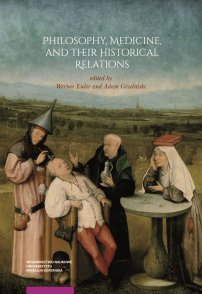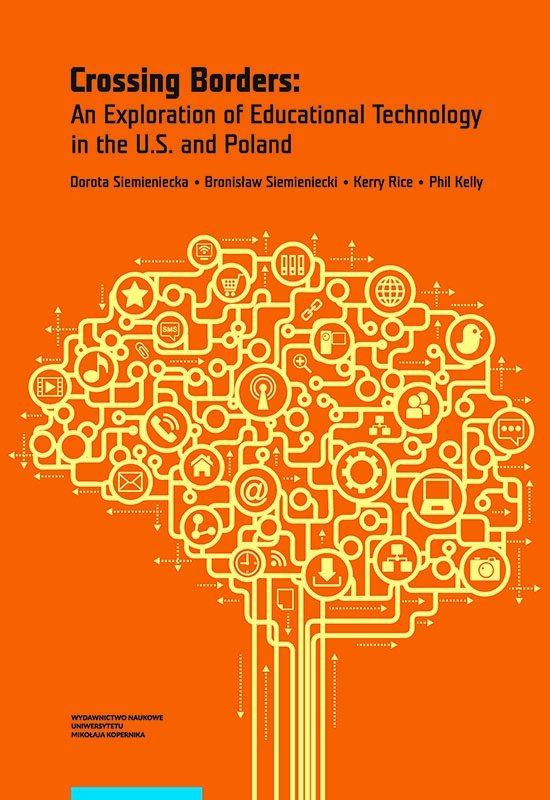Profesor zwyczajny. Pracuje na Wydziale Filozofii i Nauk Społecznych w Uniwersytecie Mikołaja Kopernika w Toruniu. Obszarem jego badań jest pedagogika medialna, a szczególnie teoria konstruktywistyczno-kognitywistyczna edukacji medialnej, problematyka roli i miejsca mediów w społeczeństwie informacyjnym. Jest autorem i współautorem 38 książek oraz ponad 90 artykułów w czasopismach naukowych wydanych w Polsce i za granicą.
Crossing Borders: An Exploration of Educational Technology in the U.S. and Poland
The monograph has an original, interesting and correct structure that includes a comparative analysis of selected aspects of traditional education in the context of historical and modern digital media education. The cognitively important results of empirical research on phenomena and processes present in the education of both countries, learning projects and teachers’ roles in contemporary education as well as their competencies in the use of digital media demonstrate the evolution of technology. Furthermore, they indicate the shape and contents of future education, which will be focused on the use of computers, computer networks and social media. The book can encourage its readers to reflect on pedagogy, the role of new media in contemporary and future education, the role and position of learners as well as the social role of the teacher. The book presents a high scientific level. Students, teachers and researchers involved in the analysis of education systems will be interested in its contents. Moreover, it can apply to people interested in the history of didactic media in comparative perspective, methodological research concepts in media pedagogy and also to those who are concerned with the results of empirical research and scientific discussion. The monograph is innovative and original. It is undeniably a unique publication on the Polish market.
prof. dr hab. Stanisław Juszczyk
Introduction / 9
PART I: Evolution of Educational Systems in the U.S. and Poland
Chapter 1: Contextual Factors and Their Influence on the Evolution of Education in the U.S. / 17
Introduction: Evolution of Education in the U.S. / 17
A Brief History of Education in America / 18
Technology and Learning / 22
TPACK/TPCK: Technological, Pedagogical, Content Knowledge Framework / 31
SAMR: Substitution Augmentation Modification Redefinition Model / 32
TIM: Technology Integration Matrix / 34
21st Century Drivers and Trends / 35
Economics / 35
The Standards Movement / 38
Competition /40
Advancements in Technology / 43
Key Policy Initiatives / 45
Conclusion / 48
References / 49
Chapter 2: Contextual Factors and Their Influence on the Evolution of Education in Poland / 55
Traditional and Modern Use of Media in Education in Poland at the Turn of the 20th and the 21st Centuries / 55
Opinions on the Didactics of the Use of Media in Education / 55
The Concept of Kazimierz Sośnicki / 57
The Concept of Multilateral Education by Wincenty Okoń / 58
The Concept of Education Through Tourism and Trips by Kazimierz Denek / 59
The Concept of Differential Didactics by Tadeusz Lewowicki / 60
The Concept of Krzysztof Kruszewski / 60
Media in Education or Efforts for Better Teaching / 60
The Illustrative Function as a Determining Role of the Media
in Education / 61
Two Pillars Forming the Polish Educational Technology / 65
Development of Mass Media / 65
Programmed Teaching / 71
Media Education in the Face of Challenges in IT Progress / 73
Media Pedagogy / 80
Summary / 83
References / 83
Chapter 3: Important Policies and Reports in American and Polish Education / 89
Important Policies and Reports in American Education / 89
1892 Committee of Ten / 90
1896 Plessy v. Ferguson / 90
1958 National Defense Education Act (NDEA) / 90
1965 Elementary and Secondary Education Act (ESEA) / 91
1972 Title I / 91
1974 Title IX / 91
1975 Individuals with Disabilities Education Act (IDEA) / 91
1983 Nation at Risk / 92
1994 Improving America’s Schools Act and Goals 2000: Educate America Act / 92
1996 National Educational Technology Plan / 92
2000 The Power of the Internet for Learning: Moving from Promise to Practice / 93
2000 National Educational Technology Plan / 93
2001 No Child Left Behind Act (NCLB) / 93
2004 National Educational Technology Plan / 94
2009 Race to the Top (RTT) / 94
2010 A Blueprint for Reform: The Reauthorization of the Elementary and Secondary Education Act / 94
2010 National Educational Technology Plan / 95
2012 U.S. Education Reform and National Security / 95
2012 Common Core State Standards (CCSS) / 96
Family Education and Privacy Act (FERPA) / 96
References / 97
Important Policies and Reports in Polish Education / 99
Systemic Changes in the Documents and Reports of the EU and International Organisations / 100
Education and Training 2010 / 101
The Copenhagen Declaration / 101
The Maastricht Communiqué / 101
The Bologna Declaration: Higher Education in Europe / 101
Commission Staff Working Paper. Schools for the 21st Century / 102
Manifesto of the European Ambassadors for Creativity and Innovation / 103
Digital School Program / 107
EU Reports and Documents Relating to the Use of ICT / 108
The Polish Education System / 110
The Education Act / 110
Core Curriculum for General Education at Primary Schools / 114
Regulation of the Minister of National Education of 23 Dec. 2008 / 114
Core Curriculum for General Education at the Lower and Upper Secondary Levels / 115
European Qualifications Framework / 117
Computer Classes and Information Technology in the Curriculum of Particular Types of Schools / 118
References / 126
PART II: The Praxis (Practical Application) of Educational Technology in the U.S. and Poland
Chapter 4: Mainstream and Emerging Practices in the U.S. / 133
The Digital Classroom in the U.S. / 133
One-to-One Computer and BYOD (Bring Your Own Device) / 135
Games, Virtual Worlds, and Simulations / 139
Online Learning / 141
Blended Learning / 144
Competency-based Education / 147
Open Educational Resources (OER) / 149
Education Data / 152
Conclusion / 155
References / 157
Chapter 5: Mainstream and Emerging Practices in Poland / 167
Research on the Use of Computer Labs in Education / 172
Research on the Use of Multimedia Workshops for Teachers Conducted between 1997 and 1999 / 177
Research on the Effectiveness of the Use of Information Technology to Develop Innovative and Creative Activities / 179
The Study on Pupils’ Creative Activity in Relation to IT Presence in Primary Schools / 180
A/ Creativity and Computer Games Used by Pupils between 12 and 15 Years of Age / 180
B/ Abilities and Creative Attitudes and Styles of Using Electronic Media / 184
C/ Research on the Project Method Supported by New Technologies / 189
D/ Research on Students’ Leisure Time in the Digital Age / 193
Experiments on the Use of Computers in Working with Children with Different Deficits / 195
A/ A Project of an Expert System of Diagnosis and Therapy Selection / 196
B/ The Project of a Computer-based School Maturity Test / 198
C/ Designs of Computer Programs for Pedagogical Diagnosis and Therapy / 199
Studies on the Use of IT in the Educational Process in the Years 2010–2014 / 200
Conclusions / 210
References / 211
Chapter 6: Research in Educational Technology / 213
Research on Digital Classrooms in the U.S. / 213
Trending Reports and Standards / 213
Emerging Pedagogy and Best Practice / 215
Digital Tools / 222
Online and Blended Learning / 226
Student Achievement / 231
Learning Analytics / 233
Chapter 7: Digital Tools in the Classroom – Poland / 237
Introduction / 237
The Use of Information Technology at the Upper Secondary Level / 237
Information Skills at the Lower Secondary Level in Light of School IT Teaching Models / 239
Research on Availability of Computer Labs / 240
Research on the Use of Information Technology in Education / 242
Information Technology as a Didactic Resource in Teacher Training – Students of Postgraduate Studies / 243
Abilities and Creative Attitude as Compared to Styles of Use of Electronic Media / 243
Didactic Effectiveness of the Use of Interactive Information Technology Tools in the Process of Early-school Teaching / 246
Research on Teachers’ Information Competence / 247
Other Research on Teachers’ Competencies / 248
Research on Intensity of Teachers’ and Head Teachers’ Use of Information Technology / 250
Research on the Most Popular ICT Tools as Used by Students in Their Everyday Life / 251
Project-based Learning (PBL) in the Construction and Implementation of the System of University Education in the Context of New Technologies / 253
Learning Styles of Students Performing Tasks by Means of the Project Method / 257
Modes of Study and Learning Styles / 258
Sources of Knowledge, the Media, Ways of Execution and Knowledge Developed Through Participation in the Project / 259
Barriers in Execution of the Project / 261
Exploration, Processing and Presenting Information in the Project Method / 262
Summary / 266
Distance Learning / 266
Introduction / 266
A. The Concept of E-learning in Light of Research / 267
B. Examples of Research on E-learning Implemented in Poland / 271
C. Projects Related to E-learning / 277
D. Educational Proposals Concerning E-learning / 281
References / 290
Dorota Siemieniecka
- New technologies in education and comunication
- Crossing Borders: An Exploration of Educational Technology in the U.S. and Poland
- Cognitive Science – New Media – Education 1/2016
- Cognitive Science – New Media – Education 1/2/2017
- Cognitive Science – New Media – Education 2/3/2017
- Cognitive Science – New Media – Education 2/5/2018
- Cognitive Science – New Media – Education 1/4/2018
- Cyberagresja – zjawisko, skutki, zapobieganie
- Teoretyczne i praktyczne aspekty pedagogiki medialnej
- Dydaktyka i pedagogika kognitywistyczna. Zasady ogólne i implementacje w fizyce
Bronisław Siemieniecki
- Crossing Borders: An Exploration of Educational Technology in the U.S. and Poland
Kerry Rice
Phil Kelly
Powiązane

Edukacja a nowe technologie w kulturze, informacji i komunikacji. Education and new technologies in culture, information and communication
Dorota Siemieniecka
New technologies in education and comunication
Dorota Siemieniecka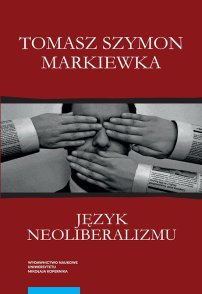
Język neoliberalizmu. Filozofia, polityka i media
Tomasz Szymon MarkiewkaInne z tej kategorii
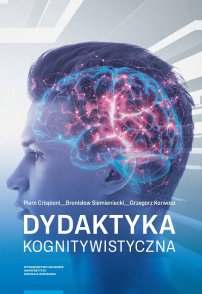
Dydaktyka kognitywistyczna
Piero Crispiani, Bronisław Siemieniecki, Grzegorz Karwasz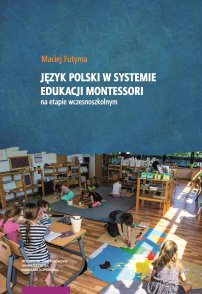
Język polski w systemie edukacji Montessori na etapie wczesnoszkolnym
Maciej Futyma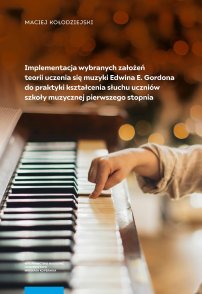
Implementacja wybranych założeń teorii uczenia się muzyki Edwina E. Gordona do praktyki kształcenia słuchu uczniów szkoły muzycznej pierwszego stopnia
Maciej Kołodziejski